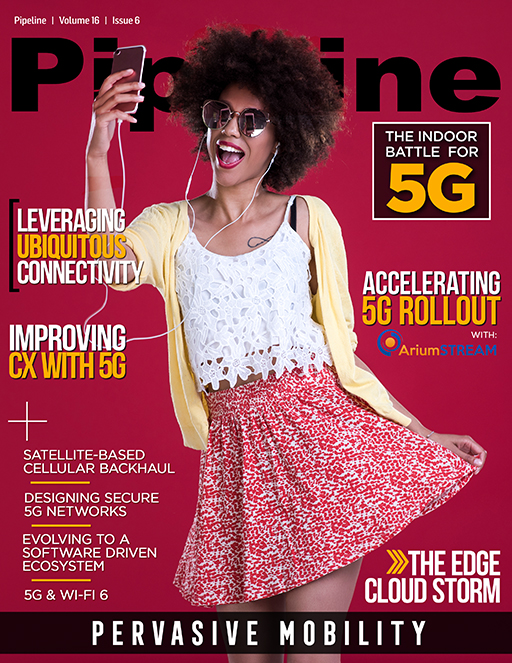Ubiquitous Connectivity Is Here
By: Max Silber

Ten years ago, businesses were just beginning to come to terms with the smartphone revolution, as iPhones and Blackberries were becoming mainstays in offices throughout the US. Just as the Internet and personal computers transformed business in the decades before that, the smartphone upended traditional operations and provided a powerful new productivity tool. Now as we begin a new decade, the next chapter in the evolution of mobility is upon us: always-on connectivity.
First though, what is always-on connectivity and why is it so important at the dawn of this new decade? Always-on connectivity is as the name suggests: mobile connectivity that never lapses and never takes a break. It’s made possible by the advancement of networking technology throughout the world and supercharged by emerging technologies like AI and 5G. It means that not only will organizations be able to equip their employees with mobile devices that can be used seamlessly across various mobile carriers, they will also be able to equip their workforces with mobile capabilities that will take the smartphone technology beyond the handset and empower them with new capabilities.
The transition to always-on connectivity will have major implications for businesses, and it’s already starting to take hold in some sectors. From a cost perspective, new capabilities will allow for more flexibility while also enabling businesses to purchase mobility solutions that are tailor-made for them. Functionally, always-on connectivity will make workers more productive and efficient and allow managers to glean deep insights into productivity and resource allocation in real-time.
The potential is revolutionary
One prime example where always-on connectivity is already being employed is within public utilities. City services like trash collection, for example, are already turning their vehicles into roaming hotspots and equipping them with “connected intelligence” and location-based capabilities that integrate with in-vehicle technology. Drivers no longer need a smartphone to communicate with dispatchers or fleet managers; their vehicles are effectively connected mobile computers.
Fleet tracking solutions can now integrate with personal navigation devices in vehicles, such as GPS applications, to optimize routes. Information can be displayed for the driver on large, easy-to-see displays, so they never have to take their eyes off the road to look at a handheld device. AI can automate the dispatch process to direct field workers directly to job sites where they are needed and allow the fleet managers to dispatch the vehicle closest to the site. The net-net of this is lower costs, time savings, and increased productivity, greatly improving the effectiveness of the service.
The fact that all this information is conveyed to drivers by screens within their vehicle rather than on a smartphone is crucial as well. According to the National Highway Traffic Safety Administration, each day in the United States approximately nine people are killed and more than 1,000 injured in crashes that are reported to involve a distracted driver. By turning vehicles into roaming mobile devices, always-on connectivity helps drivers keep their eyes on the road while equipping the vehicle with connected safety features—such as an “SOS button”—that can instantly alert staff that there is an emergency in the vehicle or on the job site.
In action: The City of Phoenix
One real-world example where always-on connectivity is being used is in Phoenix, where MetTel is supplying advanced Internet of Things (IoT) technology to help the city automate its waste and water management fleets to meet ambitious goals it has set for itself.
Phoenix, which is the fifth-largest city in the US with a population of 1.6 million people, is situated across a whopping 540 square miles. That means that, unlike some cities that are more dense, Phoenix’s waste and water management fleets must cover a lot of ground in their day-to-day operations. To complicate things further, Phoenix is the fastest-growing city in the US, so officials need to stay on top of a vast and rapidly expanding operation in order to serve their community.
A SingleSIM solution will provide coverage at any time for field workers, equipment and vehicles and real-time transmission and access to data, regardless of cellular coverage, by automatically enabling the best carrier signal to be used for data transmission, as vehicles move around the city.



















